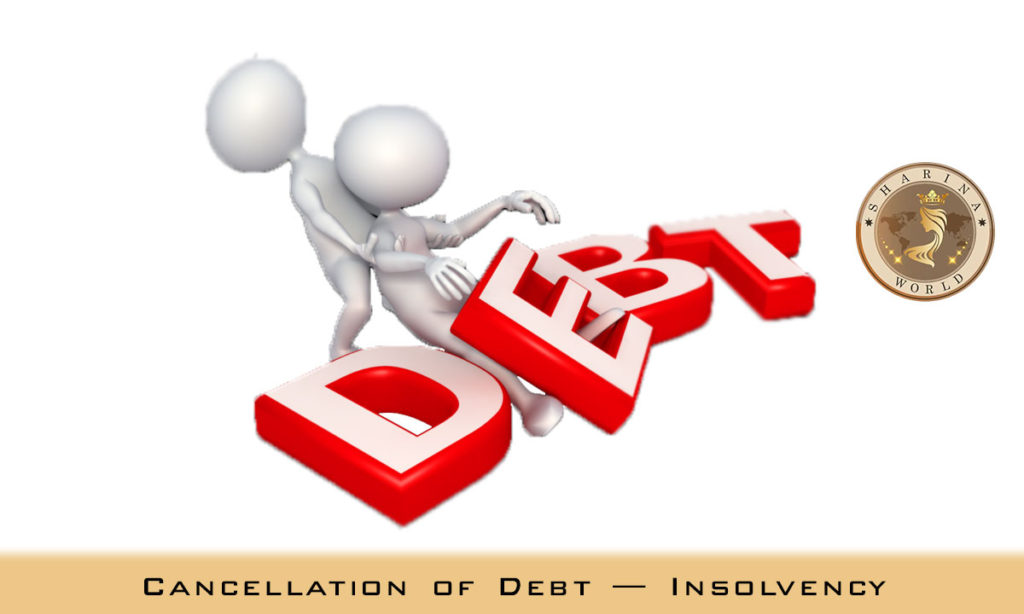Cancellation of Debt Insolvency
If some or all of your debt is cancelled, the amount of cancelled debt is generally taxable and must be reported on your return. However, you may be able to exclude the cancellation of debt income to the extent you were insolvent immediately before the cancellation. If cancelled debt is excluded from income, it is nontaxable.
Cancellation of Debt
Cancellation of debt (COD) is settlement of a debt for less than the amount owed. A debt may be cancelled by a lender voluntarily or through bankruptcy or other legal proceedings and may result in ordinary income, income from the sale of assets, or both.
Cancelled Debt Situation | Tax Treatment |
Debt owed is cancelled or forgiven. | Amount cancelled or forgiven is generally taxable as ordinary income from cancellation of debt. |
Property that is security for a debt is taken by the lender in full or partial satisfaction of that debt. | The transaction is treated as a sale of the property, which may result in a gain or loss. |
Property that is security for a debt is taken by the lender, and lender cancels recourse debt in excess of FMV of property taken. | Excess of cancelled debt over FMV is ordinary income from cancellation of debt, in addition to any gain or loss from the sale. |
Cancelled debt is intended as gift. | Amount cancelled is not income.* |
* Gift tax may apply.
Form 1099-C, Cancellation of Debt
If a lender cancels or forgives a debt of $600 or more, it must provide the borrower with Form 1099-C, showing the amount of cancelled debt to be reported as income.
Generally, you must include all cancelled amounts, even if less than $600, as Other Income on Form 1040.
Examples of COD Income
Nonbusiness credit card debt cancellation. If nonbusiness credit card debt is cancelled, you may be able to exclude the cancelled debt from income up to the extent you are insolvent.
Personal vehicle repossession. If you had a personal vehicle repossessed during the year, the transaction is treated as a sale, and gain or loss on the repossession must be computed. If the lender also cancels all or part of the remaining debt, you may be able to exclude the cancelled debt from income to the extent you are insolvent.
Insolvency
You are insolvent to the extent that the total of all your lia- bilities exceeds the fair market value (FMV) of all your as- sets immediately before the cancellation of debt.
For purposes of determining insolvency, assets include the value of everything you own, including assets that serve as collateral for debt and exempt assets which are beyond the reach of creditors, such as the value of a retirement ac- count. A recourse debt holds the borrower personally lia- ble. A nonrecourse debt does not allow the lender to pur- sue anything other than the collateral. Liabilities include:
- The entire amount of recourse debts,
- The amount of nonrecourse debt that is not in excess of the FMV of the property that is security for the debt, and
- The amount of nonrecourse debt in excess of the FMV of the property subject to the nonrecourse debt to the extent nonrecourse debt in excess of the FMV of the property subject to the debt is
Do not forget to include the amount of debt that was can- celled as part of your liabilities.
Example #1 – Amount of Insolvency More Than Cancelled Debt
Jill was released from her obligation to pay her personal credit card debt in the amount of $5,000. Jill received a Form 1099-C from her credit card lender showing cancelled debt of $5,000. Jill uses the insolvency worksheet to determine that her total liabilities immediately before the cancellation were $15,000 and the FMV of her total assets immediately before the cancellation was
$7,000, which means that immediately before the cancellation, Generally, you must include all cancelled amounts, even if less than $600, as Other Income on Form 1040.
Examples of COD Income
Nonbusiness credit card debt cancellation. If nonbusiness credit card debt is cancelled, you may be able to exclude the cancelled debt from income up to the extent you are insolvent.
Personal vehicle repossession. If you had a personal vehicle repossessed during the year, the transaction is treated as a sale, and gain or loss on the repossession must be computed. If the lender also cancels all or part of the remaining debt, you may be able to exclude the cancelled debt from income to the extent you are insolvent.
Example #2 – Amount of Insolvency Less Than Cancelled Debt
Assume the same facts as Example #1, except that Jill’s total liabilities immediately before the cancellation were $10,000 and the FMV of her total assets immediately before cancellation were $7,000. In this case, Jill is insolvent to the extent of $3,000 ($10,000 total liabilities minus $7,000 FMV of her total assets) immediately before the cancellation. Because the amount of the cancelled debt was more than the amount by which Jill was insolvent immediately before the cancellation, Jill can exclude only
$3,000 of the $5,000 cancelled debt from income under the insolvency exception. Jill must include $2,000 of cancelled debt as an addition to her income, unless another exclusion applies.
Form 982
Form 982, Reduction of Tax Attributes Due to Discharge of Indebtedness, is used to exclude cancelled debt from income due to insolvency and also to indicate a reduction in tax attributes for certain assets, if required.
Reduction of Tax Attributes
If cancelled debt is excluded from income, you must reduce certain tax attributes by the amount excluded. Tax attributes include the basis of certain assets, losses, and credits. By reducing the tax attributes, the tax on the cancelled debt is partially postponed instead of being entirely for- given. This prevents an excessive tax benefit from the debt cancellation.







